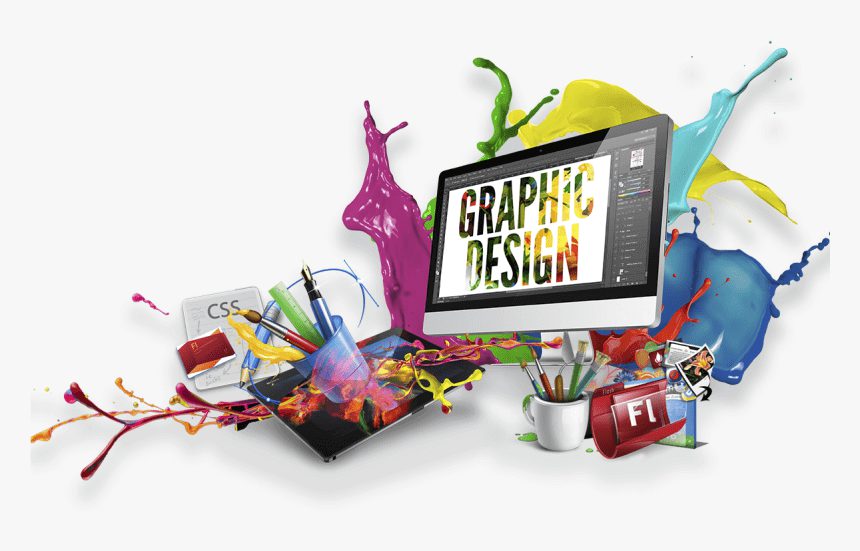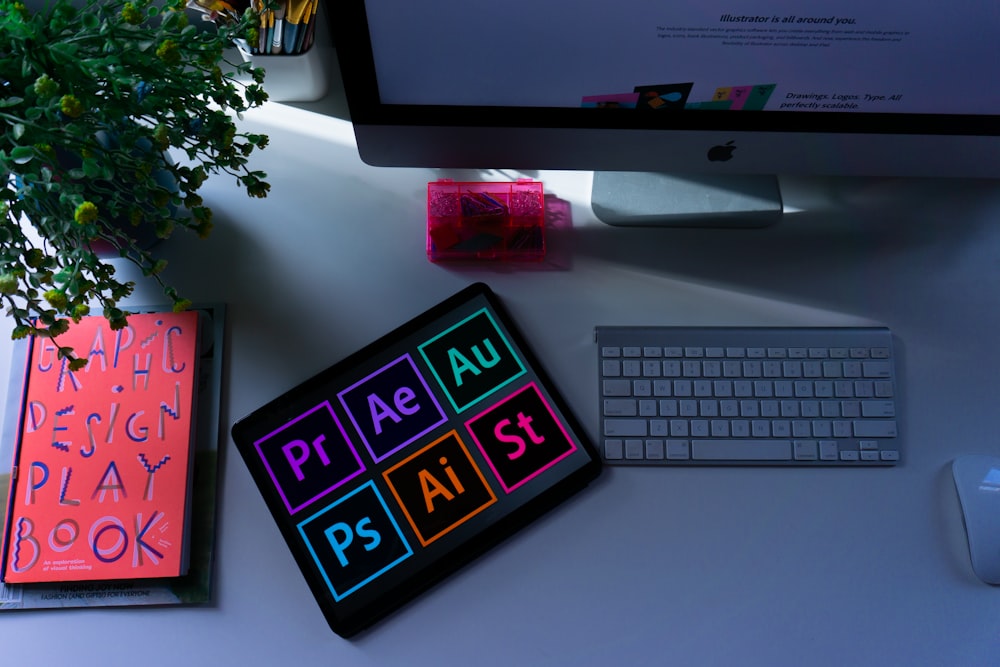Graphic Designing : Course, Colleges, Eligibility, Exam, Jobs

What is Graphic designing?
Graphic designing is a visual hierarchy, page layout techniques, and use of typography in designs to focus on the logic of the element that is displayed on the screen of the viewer, to look more interactive.
Graphic designs are created by professionals or the person with advanced knowledge in graphics, applying visual hierarchy, layouts, pictures, and typography to connect user’s specific needs to focus on the logic of presenting the elements interactively, to improve users’ experience (UX).
Why Study Graphic Designing?
Here are some reasons listed below about why to study graphic designing:
- Graphic Designing courses in India is the most demanding course right now. In today’s world, many advanced technologies are developed and to handle these technologies many skilled professionals are required.
- With limitless possibilities, the Graphic designing course is a very popular and remunerative course. In this stream, people get many career opportunities and high paying jobs from this course.
- This is a distance and full-time course. Candidates have the option to choose either one of the two according to his/her convenience.
- It addresses creativity as well as the inquisitive mind. Candidates get knowledge of new trends and technologies.
- The graphic Designing course is a combination of creativity and technology. The candidates never get bored of designing because it always requires new things that are to be applied and can also think about pursuing a long term career in it.
The Principles of Graphic Designing

The basic fundamentals of graphic designing are shown below:
1. Alignment
Alignment creates sharp edges in more blended designs.
Alignment is the basic fundamental in graphics, but the most important principle of graphic designing, as it shows the order of the design so that the people who look at the design can comfortably read and understand it.
Having a well-built end of alignment within design allows the reader’s eyes to smoothly flow through the visual message. Elements are aligned with one another so that every item has a visible connection with something else on the page, secures a design and eliminates the unplanned, messy effect which comes from the Incidental placement of elements.
If elements are aligned together which are not in close proximity with each other can provide an indiscernible connection, communicate the ideas that belong to the same category and are somewhere connected with each other.
2. Repetition
Repetition build-up a design by attaching together and creating its association in graphics. Take Repetition as a unity. Elements repeating in a design can instantly generate familiarity or identification.
Repetition is an important factor in the consistency of multiple-page documents. Repetition is used to create graphic elements, such as patterns, as it doesn’t become immense; be aware of the contrast.
Repetition helps to identify the unrelated things that belong to each other. Repetition elements are a bit like family. Each and every person in the family looks a bit different, but there are similarities that show they are all related.
3. Contrast
Contrast is the most effective way to create variety, visual interest with the design.
Contrast is created when two elements are totally different or opposite from each other. For example: size (big/small), font (classic/contemporary), colours (cool/warm) etc.
Contrast plays a critical part in the organisation of information on a page. It guides the reader where to look first and what is the most important point in the graphic design.
4. Hierarchy
Hierarchy builds the organisation.
Hierarchy is like sub-topics of the main important topic or we can say ranking in the business according to the post, or in the organizations. It is a type of system in which people get listed in an order of branches according to their importance.
In design, hierarchy builds a visible organisation to a design and gives the reader an idea of where to start and end the reading. Each and every element that is part of the design will get ranked according to their priority. For example:
- Heading
- Picture
- Sub-head
- Call to action
- Body Copy
A graphic designer can also make decisions on all sides like position, size, contrast, colour etc. to make sure that the desired hierarchy is attained.
5. Balance/Balance Using Tension
Balance gives steadiness and shape to a design through Symmetry and tension of elements in graphic designing.
Balance is the load allocated on the page by the arrangement of elements. Let’s take an example of the balance of each symmetry and through tension in graphic design.
- Symmetry balance
In simple terms, symmetry balance can be generated with an unseen centre line where the load of the elements on both halves of the page is levelled. For example, symmetry balance can be perceived in the ying/yang symbol. This form of symmetrical balance normally has a very traditional and harmonious feel even though, at certain times it appears to be slant and boring.
- Balance using tension
Balance through tension is used to give a good effect on the visible identity and it is designed by Christopher Doyle & Co. The position of the strong left-aligned copy at the head of the page plays in opposition to the fictional position at the right end. Balance tension is there between the two elements and the gloomy space in the middle. The effect has a dynamic and bold value.

Benefits of Being a Graphic Designer
In graphic designing a designer is a professional person who is in charge of designing content for the products and various projects related to print, advertisement, website/webpage, magazines, brand logos, games etc.
The role of a designer calls for understanding a customer’s needs and requirements before making any designing decisions.
Some benefits of being a graphic designer are listed below:
1. Privilege to express Imagination
The great benefit of being a graphical designer is that the person has the freedom to express their imagination and creativity. Whatever he/she imagines or envision can be displayed so that others can appreciate, applaud and even censure.
2. Grab New Skills And Technique
In the graphic designing industry, there are many new techniques and skills that can be learned. Various projects require different needs and this gives an opportunity to explore knowledge in different techniques and to learn new things every day.
3. Improves Social Communication Skills
When working in a company, you require good social skills so that you should not feel any difficulty at the time of combining with fellow employees and clients. As time approaches you will be confident enough and learn to socialize with people to communicate properly.
4. Chance to Work With Reputed Companies
A graphic designer gets various chances to work with reputable companies, he/she can increase his/her portfolio and make it stronger and secure to get an opportunity to work with a prestigious company. Customers/clients prefer to work with designers who have a strong and creative portfolio.
5. Can Become a Freelancer
A great benefit of being a graphic designer is that you can work on the projects assigned by the clients as graphic designing freelancing. By creating a strong network with people, a designer can engage his/herself with lots of various projects from different clients. A graphic designing freelancer never gets a shortage of work if he/she has good connections with different clients.
Graphic Designing Courses in India
- Diploma in Graphic design
- BA in Graphic Design
- Advance Diploma in Graphic Design
- Bachelor of Design Graphic Design
- PG Diploma in Graphic Design
- MA in Graphic Design
- Certificate in Graphic Design
- Master’s of Design in Graphic Design
- B.Sc Graphic Design
- Doctoral Programme in Graphic Design
Eligibility Criteria For Graphic Designing Courses
The general eligibility criteria for graphical courses are mentioned below:
- The students should have qualified 10+2 class examination with a minimum of 50% of marks in any stream from a recognized board of India to pursue a diploma course in designing.
- To pursue the UG courses of designing the student needs the same requirement as the diploma course but cut-off criteria vary in different institutes.
- Pursuing the master’s course or PG course in designing the student requires the UG degree in a related stream of designing or the stream equivalent to that.
- Different colleges conduct entrance exams that need to be qualified in order to get admission in the college of desired courses.
Online Graphic Designing Courses with Certificates
| Courses | Time Period |
| Online Graphic Master | 8 Months |
| Graphic Premium online | 6 Months |
| Core1 Draw Course | 2 Months |
| Adobe Photoshop Course | 2 Months |
| Indesign Course | 2 Months |
Entrance Exam For Graphic Designing
- CEED (Common Entrance Exam For Design)
- NID (National Institute of Design)
- NATA (National Aptitude Test in Architecture)
- NIFT (National Institute of Fashion Technology)
- GATE (Graduate Aptitude Test in Engineering)
Top Colleges for Graphic Designing
There are lots of colleges and institutes in India, some of the best colleges for graphic design are given below:
| Colleges/Institutes | Location |
| National Institute of Design | New Delhi |
| Indian Institute of Technology | Kanpur |
| Industrial Design Centre | Mumbai |
| Symbiosis Institute of Design | Pune |
| MIT Institute of Design | Pune |
Different Types of Graphic Design
There are different types of graphic design which are mentioned in the list below:
- Motion graphic designing
- Environmental graphic
- Art and illustration for graphic
- Publication graphic designing
- Packaging graphic designs
- Visual identity graphic designs
- Advertising & Marketing graphic designs
- User interface graphic designing
Future Job Opportunities
There are a lot more opportunities for the graphic designer, here is the list of jobs for graphic designers:
| Art Director | Marketing Manager |
| Graphic Designer | Creative Designer |
| Industrial Designer | Logo Designer |
| Illustration Artist | Layout Artist |
| Brand Identity Designer | Banner Poster Designer |
| Web Designer | Visualization Artist |
| Design Consultant | Multimedia Artist |
| Animator | Campaign Manager |
| Architecture Engineering Drafter | Video Editor |
| Flash Editor | Film Editor |
| Product Designer | Visual Merchandiser |
Also read: Digital Marketing Course : Benefits, Career Opportunities 2022




